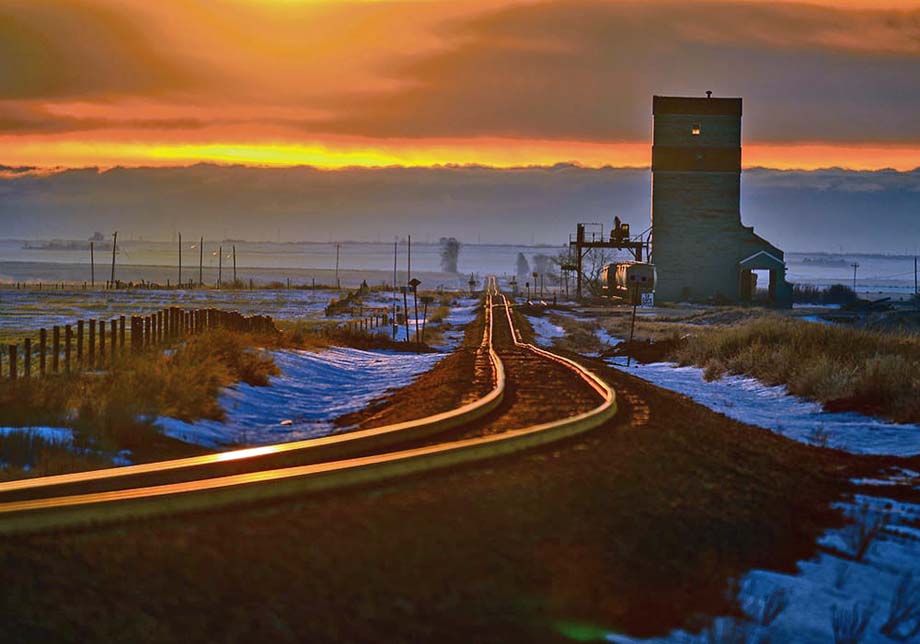

Ottawa Ontario - In supply chain conversations, facts matter.
Let's start there.
Canadian railways invested more than $20 billion in supply chain fluidity and rail capacity over the last
decade.
That's roughly 20 to 25 cents of every dollar earned that was reinvested year after year.
Rail traffic increased by 25 percent over that time, a growth rate double that of Canada's economy
overall.
Canadian railways' safety records are the best in North America, while our freight rates are among the lowest in the
world, 18 percent lower than in the United States, and at least 45 percent lower than in other industrialized countries
around the world.
Railways operate 24/7/365 and uphold their end of the bargain with shippers by delivering $320 billion worth of goods
each year.
Working collaboratively with supply chain partners, including customers, railways have transformed grain
shipping.
Canadian National Railway and Canadian Pacific Railway are delivering record grain volumes this fall while also moving
other vital commodities and consumer goods.
Railways' massive investments in track, vehicles, people, and technology have made rail a key economic driver, not a
bottleneck.
Despite these facts, there are some who think even more rail regulation will somehow "fix" problems in other
parts of Canada's supply chains.
Extended interswitching is particularly ill-advised.
If implemented, it would increase supply chain congestion, undercut past and future investments, and further increase
costs in an era of 40-year-high inflation.
It would be a step backward, as several reviews have repeatedly concluded.
This unfounded singling-out of rail is a case of over-simplification by over-regulation.
It risks stifling private investment and efficiency in a complex and critical industry.
With Canada's economy facing recessionary headwinds, we need efficiency, resiliency, and performance across supply
chains.
As a trading nation, our economic fortunes depend on getting this right.
To truly improve Canadian supply chains, we need fact-based action.
Every supply chain player, including grain producers, shippers, and port terminals, needs to work together to develop
solutions that encourage investment and improve Canada's global competitiveness.
Government can use tax incentives and improve programs like the National Trade Corridors Fund.
Decreasing red tape, expanding eligibility, and speeding approvals will encourage even more private-sector investment
and get goods to market.
We need more innovation, accountability, and data-sharing from all supply chain partners, especially at operational
levels.
This includes more rigorous scrutiny of not just railways, but of trucking firms, warehouses, storage facilities, rail
customers, port terminals, and others.
Let's jointly address dwell times, the time trains must wait for loading and unloading.
These times have doubled since the pandemic's onset.
Why?
Labour shortages at ports, terminals, and warehousing facilities, and some outdated rules that need urgent
addressing.
For instance, workers at the Port of Vancouver, where it rains 165 days a year, don't load grain in the
rain.
Workers at nearby ports at Seattle and Portland do.
Surely this can also be done safely in Canada.
When that issue is fixed, trains and ships will be moving more quickly and can move more grain.
Incentivize supply chain players to operate seven days a week rather than five (as some now do), and you add almost 30
percent supply chain capacity overnight.
We have shared these suggestions and more with the federal government and said we remain open to all good, fact-based,
ideas to improve efficiency and capacity.
We have also been clear that heavy-handed regulatory interventions based on anecdotes rather than facts will increase
costs and deter investment.
Canadians expect that when they buy something, they'll get it.
When they produce something, they trust it will get to market.
The recommendations we've outlined will ensure we can collectively keep delivering reliably and efficiently for Canada
and Canadians.
Marc Brazeau.
(likely no image with original article)
(usually because it's been seen before)
provisions in Section 29 of the
Canadian Copyright Modernization Act.

